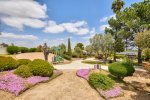Hello all,
I am an experienced real estate photographer and very familiar with white balance. When using my traditional camera gear, I don't have much issue getting my white balance correct. I capture images using "raw" (DNG) exposures and edit in Lightroom. My method works fine for everything except when I shoot with my Nano+. I am having a really tough time getting WB the correct. With the Nano+, I am shooting 3 exposure brackets with auto-exposure. I process the bracketed exposures with Lightroom's HDR engine. But even if I process just one exposure, the results are equally undesired.
The three dng files from the Nano+ are available from the link below. My resulting edited image, and a ground based fully edited image are attached for comparison.
 drive.google.com
drive.google.com
Any suggestions are greatly appreciated!
I am an experienced real estate photographer and very familiar with white balance. When using my traditional camera gear, I don't have much issue getting my white balance correct. I capture images using "raw" (DNG) exposures and edit in Lightroom. My method works fine for everything except when I shoot with my Nano+. I am having a really tough time getting WB the correct. With the Nano+, I am shooting 3 exposure brackets with auto-exposure. I process the bracketed exposures with Lightroom's HDR engine. But even if I process just one exposure, the results are equally undesired.
The three dng files from the Nano+ are available from the link below. My resulting edited image, and a ground based fully edited image are attached for comparison.
Autel Image Test - Google Drive
 drive.google.com
drive.google.com
Any suggestions are greatly appreciated!
Attachments
Last edited:








